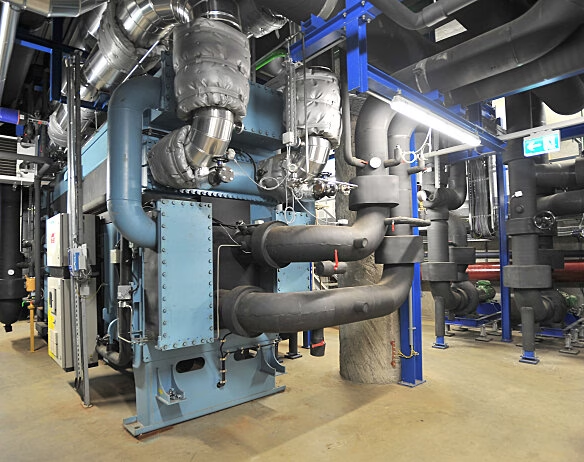The demand for environmentally friendly district cooling is constantly increasing.

The amount of district cooling produced and sold increases steadily every year. Last year, growth was particularly strong, at exactly 15.9 percent. In 2023, district cooling sales increased by almost nine percent. District cooling supplies hospitals, shopping centers, train stations, schools and universities, and hotels, among others. The decisive factor for the strong demand for district cooling last year was not only the significantly increased cooling energy demand as a result of the hottest year on record, but also the substantial expansion of the district cooling network.
Heat records fuel demand
"The heat records of recent years are fueling demand for district cooling throughout Germany," says Katalin Griessmair-Farkas, deputy managing director of the German Gas and Heat Association. "We're noticing that, for example, more and more operators of shopping centers and offices, as well as housing cooperatives, want to cool their buildings with district cooling."
In 2024, Austria experienced by far the warmest year in its 257-year history of measurements: In Austria's lowlands and mountains, temperatures averaged 1.8 degrees warmer than in an average year during the 1991-2020 climate period. Measured in cooling degree hours, this development led to a year-on-year increase in cooling demand of around 28 percent last year. In the summer months of June, July, and August, district cooling sales even increased by 35.2 percent.
More kilometers of lines
Since 2009, district cooling sales on the Austrian market have increased more than tenfold, from around 25 GWh to 237.2 GWh most recently. Demand has increased due to ongoing pipeline expansion and increased connection activity for buildings. By the end of 2024, the total length of the Austrian district cooling network had grown by 3.1 kilometers to a total of 42.6 kilometers. This corresponds to an increase of almost eight percent.
During the same period, the installed district cooling capacity increased from 186.2 megawatts (MW) to 203.3 MW – an increase of 17.1 MW or 9.2 percent.
Vienna invests, Bregenz among “Cool Spots”
The focus of cooling supply in Austria has so far been primarily in Vienna, where the University of Vienna, the General Hospital, the Parliament, City Hall, and the Vienna State Opera, among others, are cooled in an environmentally friendly way. The expansion of Vienna's district cooling network will continue in 2025: New chillers were installed at the Schottenring cooling center, a system went into operation in Floridsdorf, and an innovative ice storage facility is being built on the MedUni campus. Meanwhile, the state capitals of Linz and St. Pölten have followed suit and are now considered "Cool Spots." New to this cool circle is Bregenz. This year, the city began supplying buildings with sustainable cooling. This process uses a particularly environmentally friendly process – so-called "free cooling" with water from Lake Constance, which is used directly to cool buildings via cold exchangers, thus avoiding the use of energy-intensive machines.
outlook
District cooling works in a similar way to district heating – only in reverse: Cold water is transported directly to buildings via an underground pipe system, where it is used to cool the rooms. The energy for cooling usually comes from environmentally friendly sources such as waste heat, river water, or industrial chillers. In addition, cooling with district cooling significantly relieves the load on electricity grids on hot days when air conditioning systems are running at full capacity. Further district cooling projects are being planned in the federal states: District cooling is scheduled to go online in Klagenfurt in 2026, and district cooling is also expected to be available in Graz from 2030. "We expect that current district cooling capacities will double over the next five years – to a total of around 370 megawatts," Griessmair-Farkas concludes. This would be enough to cool an area of more than seven square kilometers – an area larger than Vienna's Prater.
About district cooling
District cooling is the environmentally friendly alternative to individual air conditioning systems. District cooling is generated using absorption chillers (which utilize waste heat from industry, cogeneration plants, or waste incineration), or—as in the case of Bregenz—by using lake water directly via a cooling exchanger (“free cooling”). As with district heating, the facilities are supplied centrally or decentrally. With decentralized supply, a cooling center is built at the consumer's premises. Insulated pipes transport the water, cooled to 5 to 6 degrees Celsius, to the customer. It flows back at approximately 16 degrees Celsius for further cooling.
